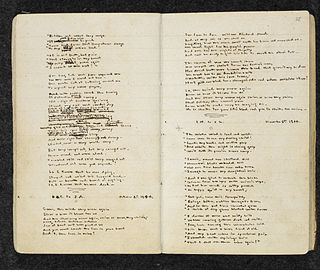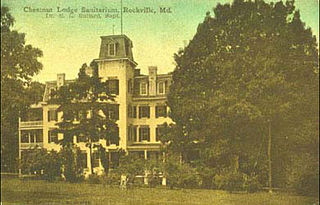
Kay Redfield Jamison is an American clinical psychologist and writer. Her work has centered on bipolar disorder, which she has had since her early adulthood. She holds the post of the Dalio Professor in Mood Disorders and Psychiatry at Johns Hopkins University School of Medicine and is an Honorary Professor of English at the University of St Andrews.

The Bell Jar is the only novel written by the American writer and poet Sylvia Plath. Originally published under the pseudonym "Victoria Lucas" in 1963, the novel is semi-autobiographical with the names of places and people changed. The book is often regarded as a roman à clef because the protagonist's descent into mental illness parallels Plath's experiences with what may have been clinical depression or bipolar II disorder. Plath died by suicide a month after its first United Kingdom publication. The novel was published under Plath's name for the first time in 1967 and was not published in the United States until 1971, in accordance with the wishes of both Plath's husband Ted Hughes and her mother. The novel has been translated into nearly a dozen languages.

A paracosm is a detailed imaginary world thought generally to originate in childhood. The creator of a paracosm has a complex and deeply felt relationship with this subjective universe, which may incorporate real-world or imaginary characters and conventions. Commonly having its own geography, history, and language, it is an experience that is often developed during childhood and continues over a long period of time, months or even years, as a sophisticated reality that can last into adulthood.

Links between creativity and mental health have been extensively discussed and studied by psychologists and other researchers for centuries. Parallels can be drawn to connect creativity to major mental disorders including bipolar disorder, schizophrenia, major depressive disorder, anxiety disorder, OCD and ADHD. For example, studies have demonstrated correlations between creative occupations and people living with mental illness. There are cases that support the idea that mental illness can aid in creativity, but it is also generally agreed that mental illness does not have to be present for creativity to exist.
Herbert "Harry" Stack Sullivan was an American Neo-Freudian psychiatrist and psychoanalyst who held that "personality can never be isolated from the complex interpersonal relationships in which [a] person lives" and that "[t]he field of psychiatry is the field of interpersonal relations under any and all circumstances in which [such] relations exist". Having studied therapists Sigmund Freud, Adolf Meyer, and William Alanson White, he devoted years of clinical and research work to helping people with psychotic illness.

Hildegard E. Peplau was an American nurse and the first published nursing theorist since Florence Nightingale. She created the middle-range nursing theory of interpersonal relations, which helped to revolutionize the scholarly work of nurses. As a primary contributor to mental health law reform, she led the way towards humane treatment of patients with behavior and personality disorders.
Schizophrenics Anonymous is a peer support group to help people who are affected by schizophrenia and related disorders including bipolar disorder, schizoaffective disorder, psychotic depression and psychosis.
Theodore Lidz was an American psychiatrist best known for his articles and books on the causes of schizophrenia and on psychotherapy with patients with schizophrenia. An advocate of research into environmental causes of mental illness, Lidz was a notable critic of what he saw as a disproportionate focus on biological psychiatry. Lidz was a Sterling Professor of Psychiatry at Yale University. In his lifetime, he did a great amount of research on interpersonal causes of schizophrenia.
The trauma model of mental disorders, or trauma model of psychopathology, emphasises the effects of physical, sexual and psychological trauma as key causal factors in the development of psychiatric disorders, including depression and anxiety as well as psychosis, whether the trauma is experienced in childhood or adulthood. It conceptualises people as having understandable reactions to traumatic events rather than suffering from mental illness.
Frieda Fromm-Reichmann was a German psychiatrist and contemporary of Sigmund Freud who immigrated to America during World War II. She was a pioneer for women in science, specifically within psychology and the treatment of schizophrenia. She is known for coining the now widely debunked term Schizophrenogenic mother. In 1948, she wrote "the schizophrenic is painfully distrustful and resentful of other people, due to the severe early warp and rejection he encountered in important people of his infancy and childhood, as a rule, mainly in a schizophrenogenic mother".

Chestnut Lodge was a historic building in Rockville, Maryland, United States, well known as a psychiatric institution. Located at 500 W Montgomery Avenue, it was a contributing property to the West Montgomery Avenue Historic District.
Harold Frederic Searles was one of the pioneers of psychiatric medicine specializing in psychoanalytic treatments of schizophrenia. Searles had the reputation of being a therapeutic virtuoso with difficult and borderline patients; and of being, in the words of Horacio Etchegoyen, president of the IPA, "not only a great analyst but also a sagacious observer and a creative and careful theoretician".
I Never Promised You a Rose Garden is a 2004 play based on Joanne Greenberg's 1964 novel of the same name.
Lyman C. Wynne (1923–2007) was an American psychiatrist and psychologist with a special interest in schizophrenia. His early research helped lay the foundation for family-based therapies, influencing others such as R. D. Laing and Margaret Singer. He made a number of discoveries about the interaction of genetics and the environment in the development of schizophrenia, working with adopted twins. He published numerous articles and co-edited "The Nature of Schizophrenia" (1978), received the Frieda Fromm-Reichmann Award for schizophrenia research from the American Academy of Psychoanalysis in 1965, the Meritorious Service Medal from the U.S. Public Health Service in 1966, and received two awards from the American Family Therapy Academy, one in 1981 and another in 1989.
Otto Allen Will Jr. was a U.S. psychiatrist whose work in psychoanalysis focused on treatment of patients with schizophrenia using intensive psychotherapy. He is also credited for his advancement of attachment theory and milieu therapy.
In psychology, narcissistic withdrawal is a stage in narcissism and a narcissistic defense characterized by "turning away from parental figures, and by the fantasy that essential needs can be satisfied by the individual alone". In adulthood, it is more likely to be an ego defense with repressed origins. Individuals feel obliged to withdraw from any relationship that threatens to be more than short-term, avoiding the risk of narcissistic injury, and will instead retreat into a comfort zone. The idea was first described by Melanie Klein in her psychoanalytic research on stages of narcissism in children.
Gail Hornstein is an American psychologist and author. She is a professor of psychology and education at Mount Holyoke College. She doesn't see mental disorders as merely chemical imbalances in the brain, but is more interested in the lived experiences of those suffering from various mental ailments. Her Bibliography of First-Person Narratives of Madness in English lists more than 1,000 books by people who have written about madness from their own experience; it is used by researchers, clinicians, educators, and peer groups around the world. Her 2009 book Agnes's Jacket is a history of survivors of the mental health system and their stories.

Lori Altshuler was a professor at the University of California, Los Angeles (UCLA) Department of Psychiatry and Biobehavioral Sciences and held the Julia S. Gouw Endowed Chair for Mood Disorders. Altshuler was the Director of the UCLA Mood Disorders Research Program and the UCLA Women's Life Center, each being part of the Neuropsychiatric Hospital at UCLA.

Mambalikalathil Sarada Menon was an Indian psychiatrist, social worker and the founder of Schizophrenia Research Foundation (SCARF), a Chennai-based non-governmental organization working for the rehabilitation of people afflicted with schizophrenia and other mental disorders. An Avvaiyyar Award recipient, she was a former Madras Medical Service officer and the first woman psychiatrist in India. The Government of India awarded her the third highest civilian honour of the Padma Bhushan, in 1992, for her contributions to society.

The Frieda Fromm-Reichmann Cottage is a historic house located at 19 Thomas Street in Rockville, Montgomery County, Maryland. It was built in 1936 to house the residence and professional office of Frieda Fromm-Reichmann, one of the leading psychoanalysts at the Chestnut Lodge psychiatric hospital, on whose grounds it stood. Fromm-Reichmann (1899-1957) was influential in the development of interpersonal psychoanalysis and its use in the treatment of schizophrenia. The cottage was designated a National Historic Landmark in 2021.









